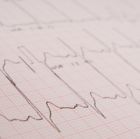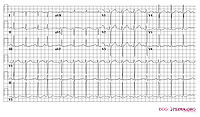Main Page: Difference between revisions
Jump to navigation
Jump to search
mNo edit summary |
mNo edit summary |
||
| Line 130: | Line 130: | ||
{ | { | ||
|layout="proposals transpose" type="()"} | |layout="proposals transpose" type="()"} | ||
|Osborne J wave|pre-exitation|QTc prolongation|First degree AV block | |<small>Osborne J wave</small>|<small>pre-exitation</small>|<small>QTc prolongation</small>|<small>First degree AV block</small> | ||
What makes this patient arrhythmia prone? | <small>What makes this patient arrhythmia prone?</small> | ||
</qpoll> | </qpoll> | ||
[[Answer DRJ case 1|Answer]] | [[Answer DRJ case 1|Answer]] | ||
Revision as of 04:00, 16 October 2010
|
| Contribute to this and other CardioNetworks websites, read our call for authors |
The ECG Course ECG course
|
The ECG Textbook |
Cases and Examples Cases:
Arrhythmia prone <qpoll id=poll01 showresults="2;color:blue;background:yellow;textcolor:#FF0000;textbackground:aquamarine"> { |
layout="proposals transpose" type="()"} | pre-exitation|QTc prolongation|First degree AV block
What makes this patient arrhythmia prone? </qpoll> Answer |
Popular items
|
News & Background
|
